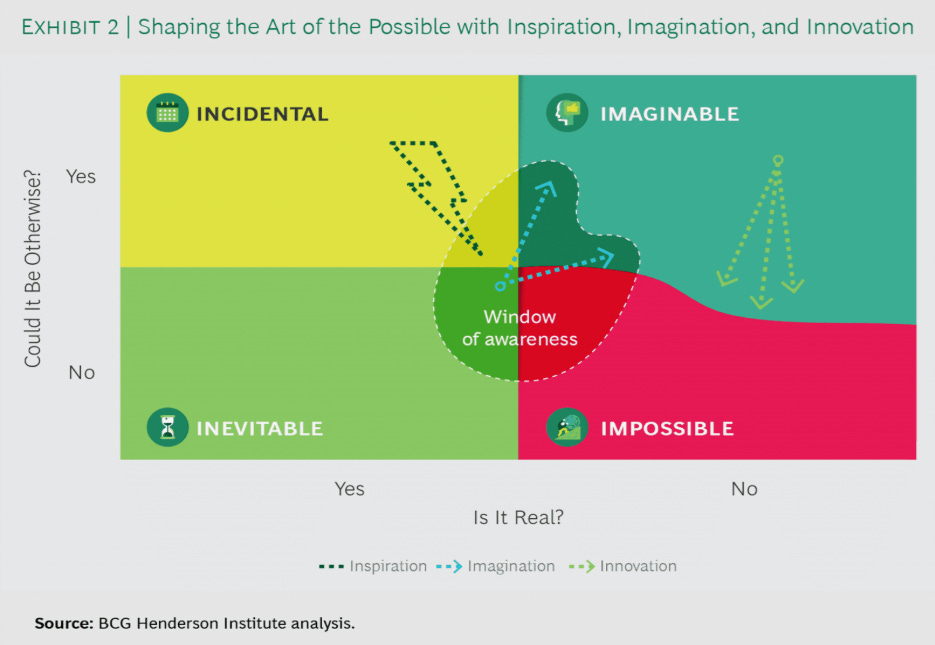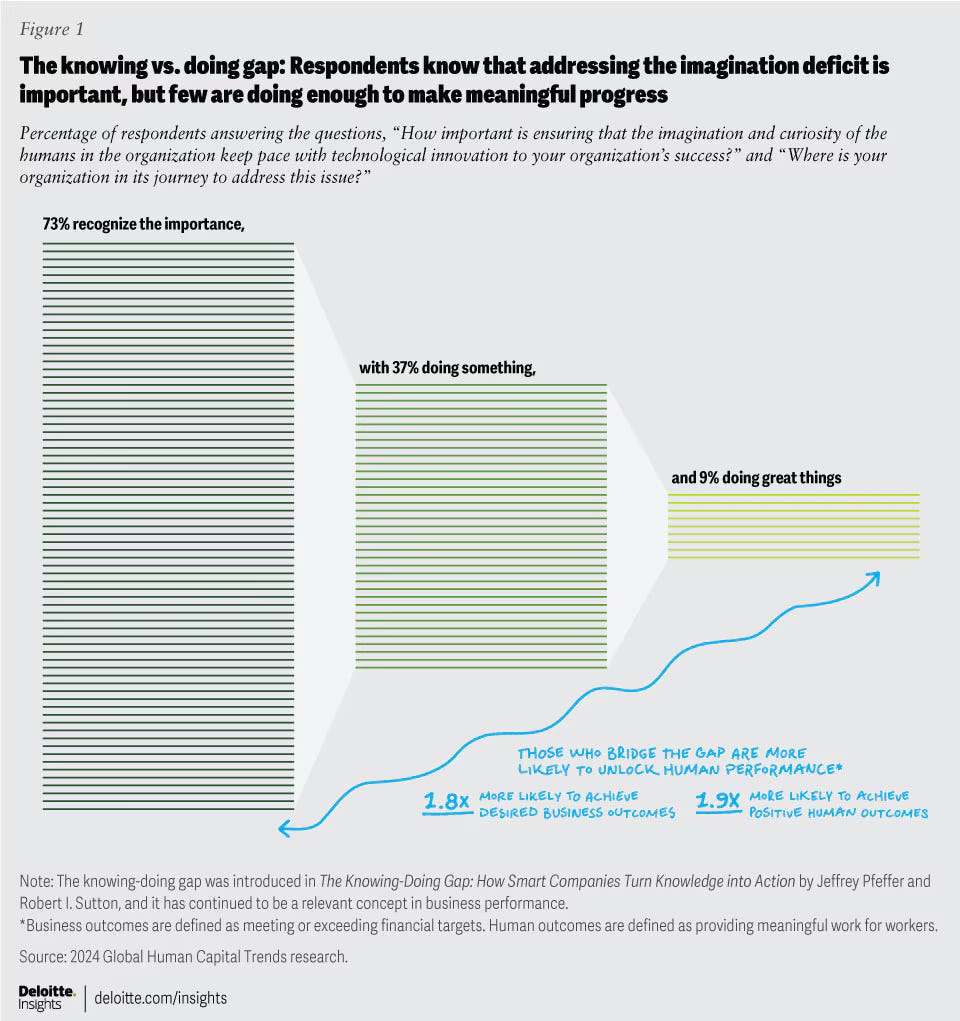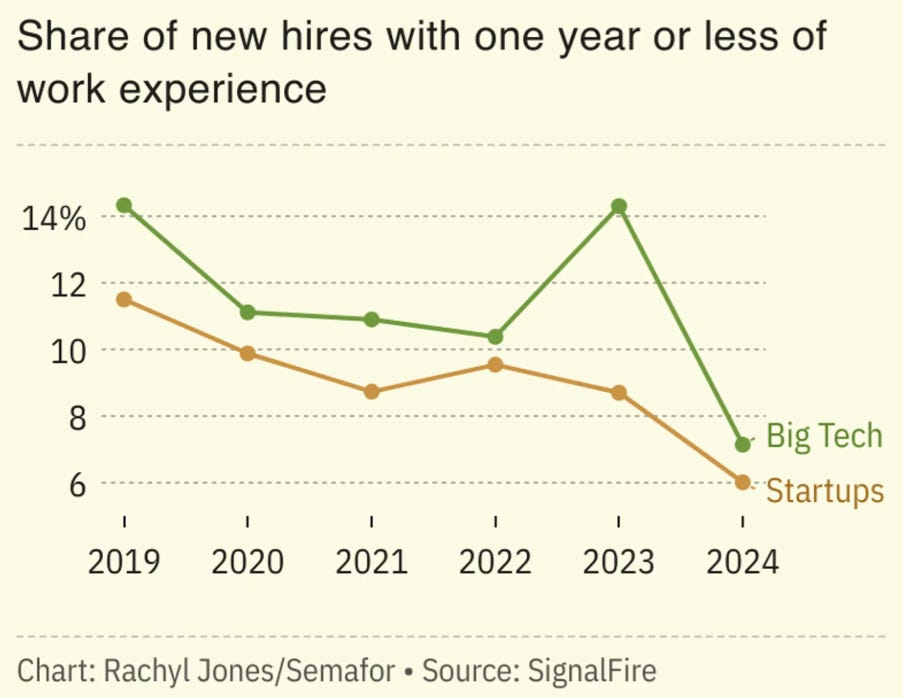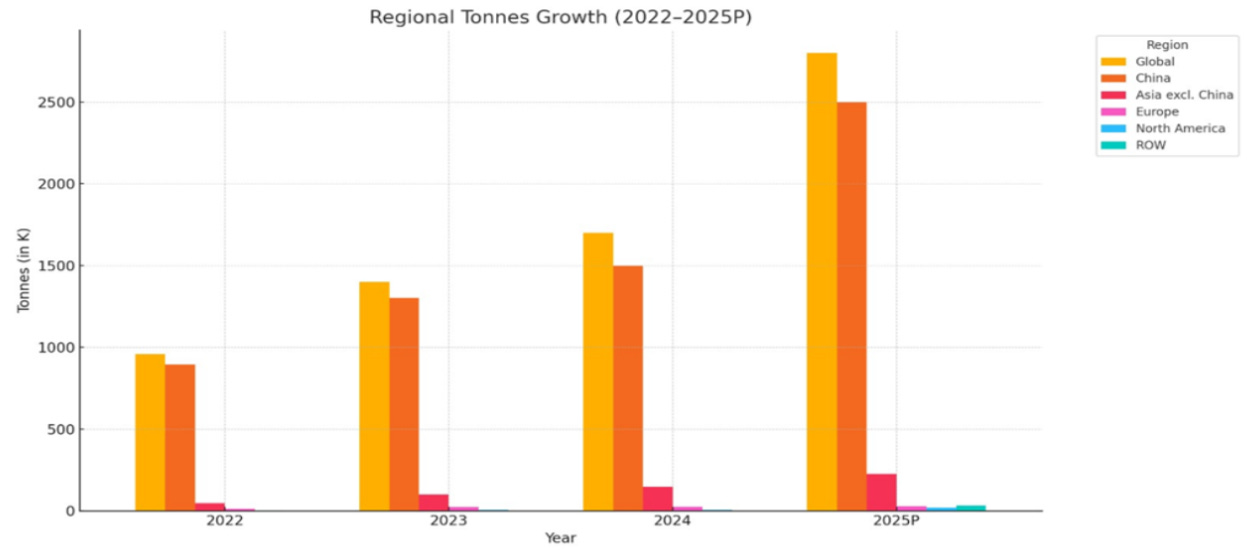Welcome to Binary Circuits’ 23rd weekly edition
Your weekly guide to most important developments in technological world
Dear Readers,
Binary Circuit investigates trends, technology, and how organizations might profit from rapid innovation. GreenLight, the brain behind Binary Circuit, finds possibilities, analyzes challenges, and develops plans to fit and grow firms to stay ahead. Looking to scale your business, partners, or AI/technology integration.
This week, we discuss how growing imagination deficit in generative AI is fueling the race for advanced node semiconductors, as artificial intelligence becomes a crucial tool in enhancing emergency services.
Let’s dive in
Imagination deficit is quickly becoming a silent crisis in the world of generative AI
Artificial intelligence is deeply involved in our daily life. As of May 2025, ChatGPT reported nearly 800 million weekly active users and 122.58 million daily users. But on the harder part it has quietly eroded our most human capacity of imagining things.
Recent research from the University of Toronto reveals a 42% drop in divergent thinking scores—our ability to generate multiple solutions—among college students over just five years.
Both academics and the corporate sector are reporting similar erosion in their ability to generate ideas independently.
Let’s understand what imagination is?
Imagination is the engine of human progress. It enables us to think beyond what is, into the realm of what could be. It allows us to solve problems that have not yet occurred, to build what doesn’t yet exist, and to predict the needs of a future not yet lived.

Generative AI excels at convergent thinking identifying optimal solutions within set guidelines. Humans, however, uniquely thrive on divergent thinking, the ability to break those boundaries and review problems from different angles.
Studies have shown that while AI can generate many ideas, the most original and disruptive ideas still evolve from the human mind.
The growing imagination gap has serious implications for businesses. The Deloitte 2024 Global Human Capital Trends report found that while 73% of executives understand the importance of ensuring human capabilities keep pace with technology, only 9% report making tangible progress.
This may risk organizations becoming technically competent but creatively bankrupt.

This situation calls for rebalance. AI should be used as an assisting tool without being overdependent on it.
Here are a few ways organizations can boost imagination of their workforce-
Integrate imagination into workforce planning. Use feedback, digital diagnostics, and even AI itself to identify and close gaps in human capabilities.
Leverage simulations, real-world problem-solving, and immersive tools to build those brain muscles.
Give teams structured time and space to experiment so creativity can flourish.
Leaders must signal that exploration matters. That means valuing imagination—not just execution—and making space for failure as part of the innovation cycle.
Imagination skillset is going to be the one asset no algorithm can replicate, no model can fully understand, and no machine can claim. It is and always will be an edge for the human race.
How AI has intensified the race for advanced nodes semiconductors
The semiconductor industry is entering a defining era. The demand for advanced chips is skyrocketing, with sectors like AI, IoT, and autonomous systems requiring more computing power. The global AI semiconductor market is forecasted to grow at a CAGR of 37% from 2022 to 2030. Companies investing in next-gen chip technologies will be the biggest beneficiaries.
The semiconductor race is fierce, and the top players are investing billions in R&D to stay ahead. While TSMC leads the pack, Intel is aggressively pushing its roadmap with RibbonFET and PowerVia technologies.
TSMC racing ahead:
In the fourth quarter of 2024, TSMC began manufacturing chips using its performance-enhanced N3P (3rd Generation 3nm-class) process technology. To deliver the benefits of N3P quickly, TSMC plans to launch two production nodes N3X( a 3nm-class process) and N2( a 2nm-class process),.that will begin high-volume manufacturing in the second half of 2025.
Then there is A16 (a 1.6 nm technology) scheduled for the later half of 2026. TSMC also revealed that its 1.4nm-class A14 process is scheduled for mass production by 2028, with an enhanced A14 SPR version to follow in 2029.
The competition to produce the world's most advanced chips is fierce, and TSMC's product roadmap promises that the battle for supremacy will be intense.
Intel is not behind:
Intel has released significant updates to its Intel Foundry Services roadmap in response to TSMC's announcement of advancements in its 1.8nm(A16) technology, indicating a growing level of competition in the production of next-generation semiconductors.
Intel CEO Lip-Bu Tan declared during the 2025 Intel Foundry Conference that the company's Intel 18A (1.8nm-class) process has formally moved into the risk production stage.
Additionally, Intel unveiled a number of new process iterations, such as Intel 18A-P, Intel 18A-PT, and Intel 14A, a 1.4nm-class technology that is its most advanced node to date. By 2027, Intel hopes to have products based on the 14A node available.
These timelines create a new flashpoint in the competition between TSMC and Intel, with 2028 anticipated to be a crucial year in the battle for supremacy in 1.8nm.
Japan’s Rapidus also joins the race:
Japan’s Rapidus, as an emerging challenger, is also trying to build momentum by accelerating its 2nm development, has started its pilot line production in April. Rapidus—a consortium of eight Japanese companies, aims to mass-produce 2-nanometer (nm) chips by 2027.
Samsung is also gaining momentum:
With 2nm becoming the next battleground for chipmakers, Samsung is racing like Intel to close the gap with TSMC by landing major external orders. Samsung Foundry has entered the final phase of 2nm performance testing with NVIDIA GPUs and Qualcomm APs.
Where China stands:
SMIC (Semiconductor Manufacturing International Corporation) reportedly has unveiled a working 2nm chip, marking a major technological leap, especially given the ongoing U.S. export restrictions. SMIC achieved this milestone without having access to EUV (Extreme Ultraviolet Lithography), which is normally necessary for producing chips at sizes of 5 nm and below.
The Road Ahead:
As the competition for advanced semiconductor technology is getting intense, territorial differentiation will be crucial in shaping the future of the industry. This shift represents both an opportunity and a challenge for companies that depend on advanced computing.Businesses that incorporate these chips into their products as soon as possible will have a competitive advantage over those that hesitate may struggle to keep up with rapid advancements.
Artificial Intelligence is emerging as one of the most powerful tools to augment emergency services
Emergency response earlier followed a predictable formula: During emergency call 911 and help arrives. But now this model is obsolete.
In 2024, the U.S. handled over 2 billion emergency calls. Peak volumes reached 690 emergencies per second on New Year’s Eve 2025. The scale and speed of modern crises have exposed the limitations of old response systems, pushing them to rethink how we manage emergencies.
AI is now coming to the rescue. It’s moving emergency response from reactive to predictive, and from generic to personalized.
The global incident and emergency response management market is expected to grow from $137.5 billion in 2024 to $196.2 billion in 2030, at a CAGR of 6.1% as per MarketsandMarkets.
Startups such as Resilitix, RapidSOS, and Omdena, stand at the forefront to disrupt this large and growing addressable market with AI integration.
“We’re not waiting for a call anymore. We’re reading the signals in advance.”— Michael Martin, Co-founder, RapidSOS
RapidSOS, a New York-based AI startup, has emerged as a go-to AI-powered emergency response solutions provider with its proven benefits to Grubhub, SiriusXM Connect, and Uber, among others
During California’s devastating wildfires, Resilitix used AI-powered geospatial analytics to forecast fire spread, suggest evacuation zones, and guide firefighting teams—all in real time.
In parts of Africa and Latin America, Omdena’s predictive AI models analyze traffic, weather, hospital load, and patient severity to direct ambulances along the fastest, safest routes—shaving down life-critical minutes.
AI isn’t just helping during emergencies—it’s preparing us before they even happen. Machine learning models are now used to accurately forecast hurricanes, floods, and wildfires.
For example, Time reported that AI helped predict Hurricane Milton’s landfall near Siesta Key, Florida—giving residents time to evacuate. The National Weather Service partnered with translation company Lilt to deliver weather alerts in Spanish and Simplified Chinese, reducing translation time from 60 to just 10 minutes.
To assess damage after hurricanes in the U.S., and earthquakes in Mozambique and Turkey, Google’s AI analysed satellite images to identify the worst-hit areas for aid purposes.
As emergencies grow more frequent , AI helps us to recover from crises. From real-time geospatial analysis to predictive ambulance routing and multilingual alert systems, these innovations are essential.
The future of public safety will not be defined solely by how fast we respond, but by how intelligently we prepare.
Strategic Question of the Week:
The Early-Career Squeeze in Tech - Should tech companies be held more accountable for developing junior talent in an AI-driven era? Or is this just the new normal that graduates must adapt to?
A new analysis by SignalFire confirms what many Gen Z job seekers already feel: it’s tougher than ever for recent grads to break into tech. Compared to pre-pandemic levels, Big Tech and startups are now hiring half as many early-career workers as a share of total hires.

Instead of providing training, many firms are choosing to post entry-level roles but fill them with experienced professionals, creating a mismatch between job titles and actual expectations. This trend is exacerbated by several factors:
Tools that can automate junior-level coding, content generation, and customer support are reducing the need for large entry-level teams.
After a wave of layoffs in 2023 many at the senior level companies briefly opened up more junior roles, but those opportunities quickly disappeared as cost-efficiency again took priority.
Graduates entering into a loop: No job without experience, no experience without a job.
For companies, this raises a long-term risk: Where will the next generation of senior engineers come from if no one is training them now?
Chart for the Week:
China has a chokehold on black mass refining
But China has extreme supremacy in black mass refining, a mixture of granular, shredded battery materials containing all the valuable metals that make up battery anodes and cathodes, the most expensive parts of a battery. Black mass makes up 40-50% of battery weight and is less expensive than virgin cobalt, nickel, and manganese.
According to Benchmark Mineral Intelligence, China’s black mass refining capacity is projected to nearly triple, from 895,000 tonnes in 2022 to 2.5 million tonnes by 2025, representing 89% of global capacity. China’s refining capacity is projected to grow by 179% in the same period.
China dominates Lithium-ion battery recycling. The country processed 1.2 million tonnes in 2022 and is expected to process 3.6 million tonnes in 2025 from a total global capacity of more than 4.6 million tonnes, accounting for 78% of global pre-treatment capacity.
Black mass refining extracts valuable metals like lithium, cobalt, nickel, and manganese from the black mass material obtained during lithium-ion battery recycling.



